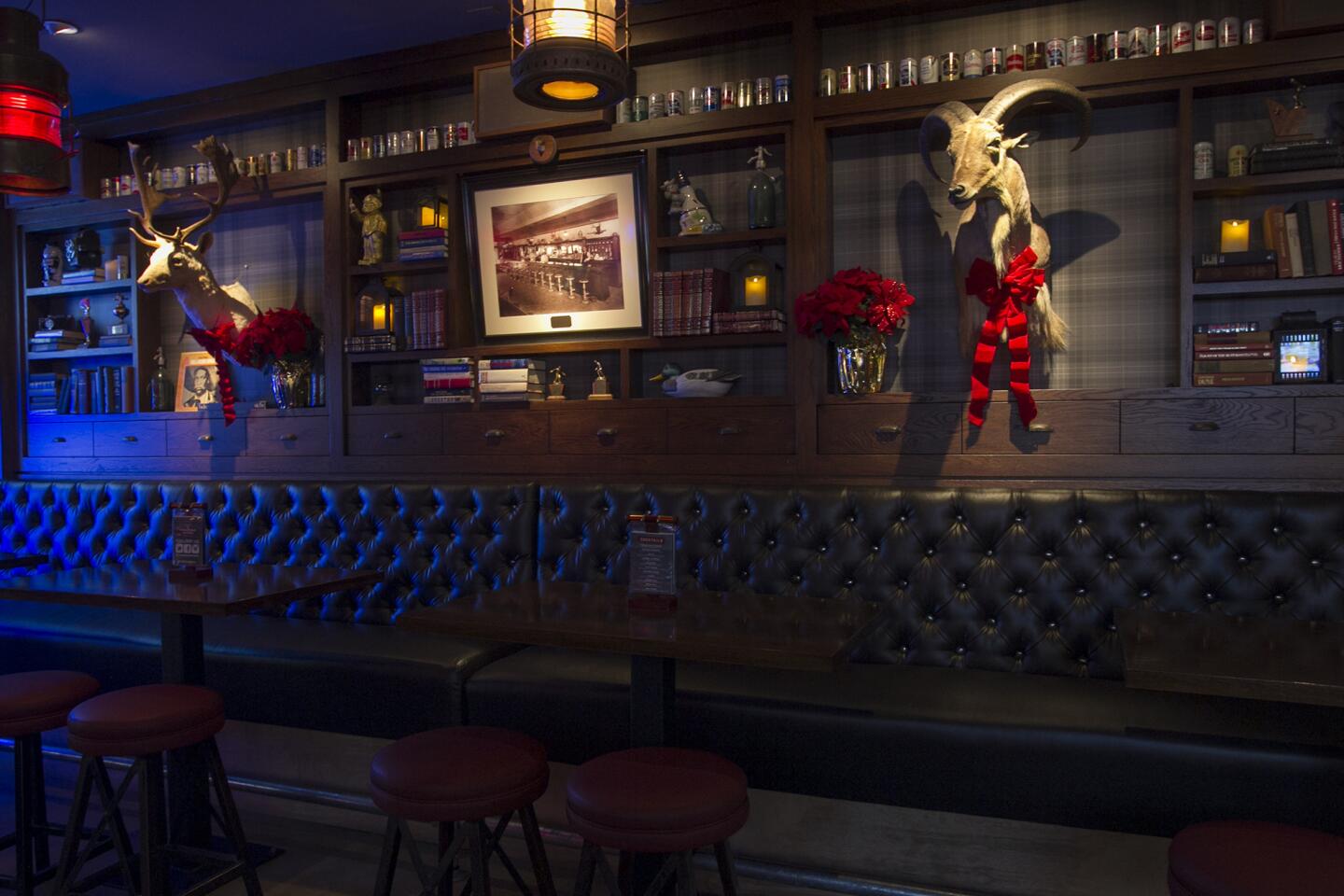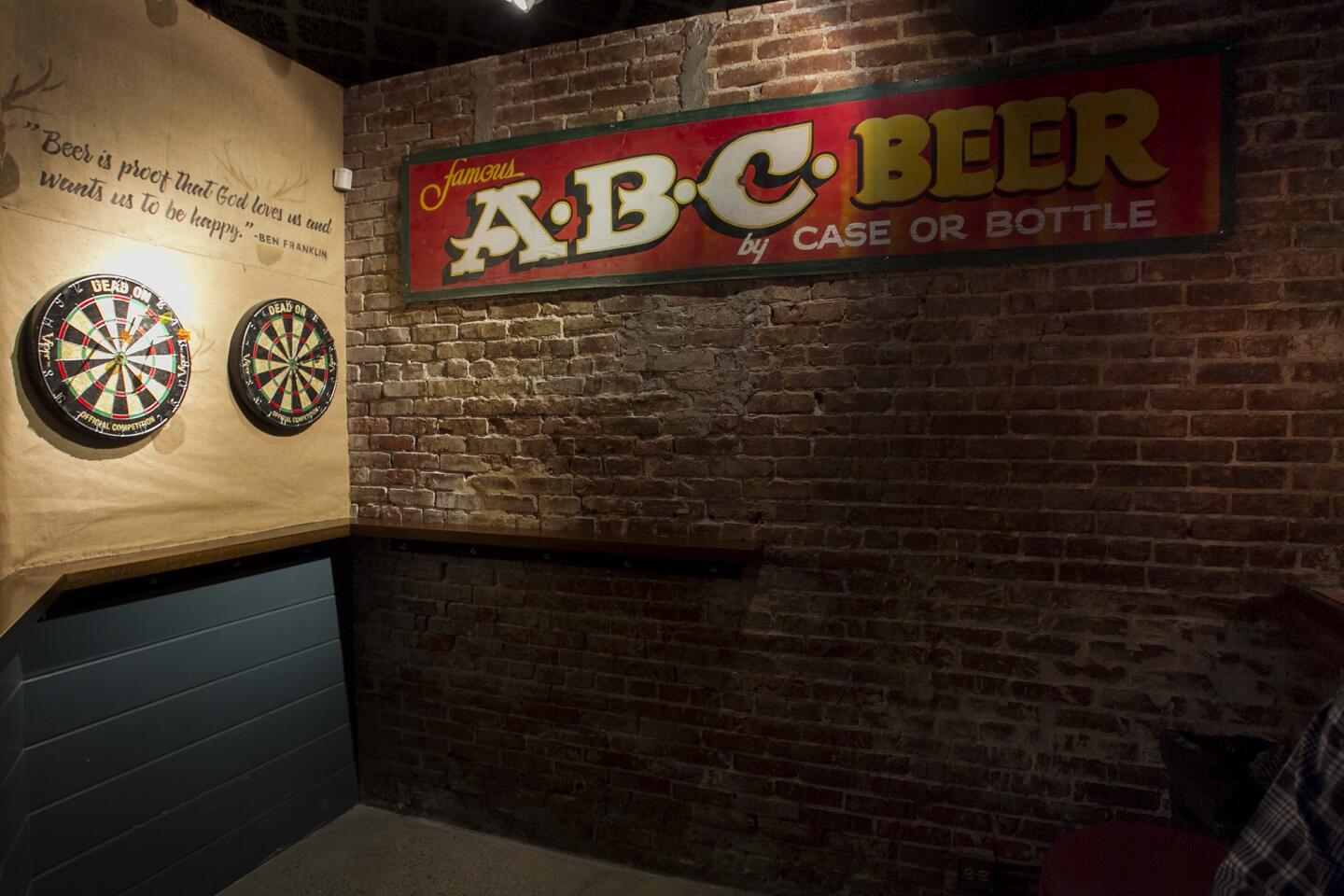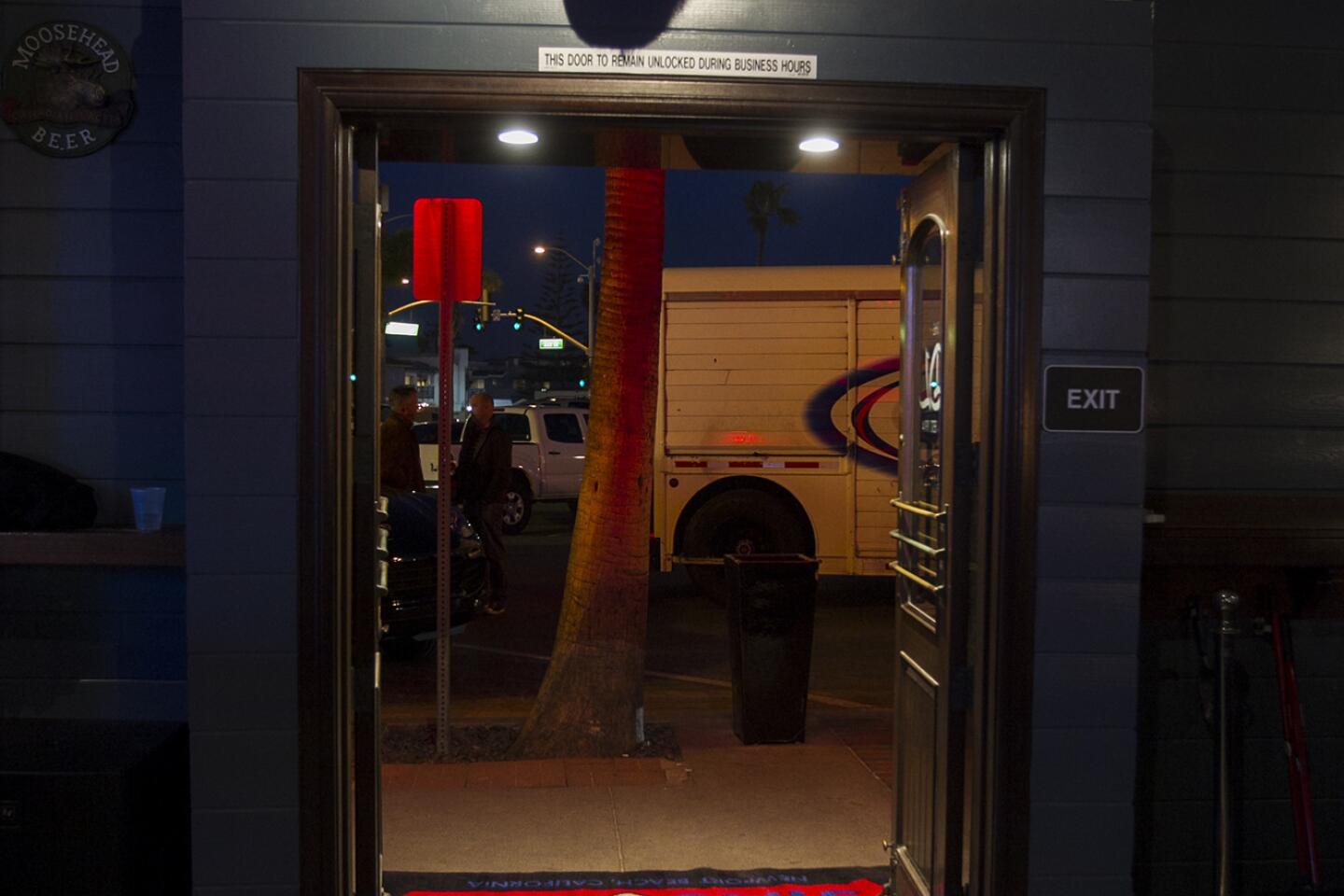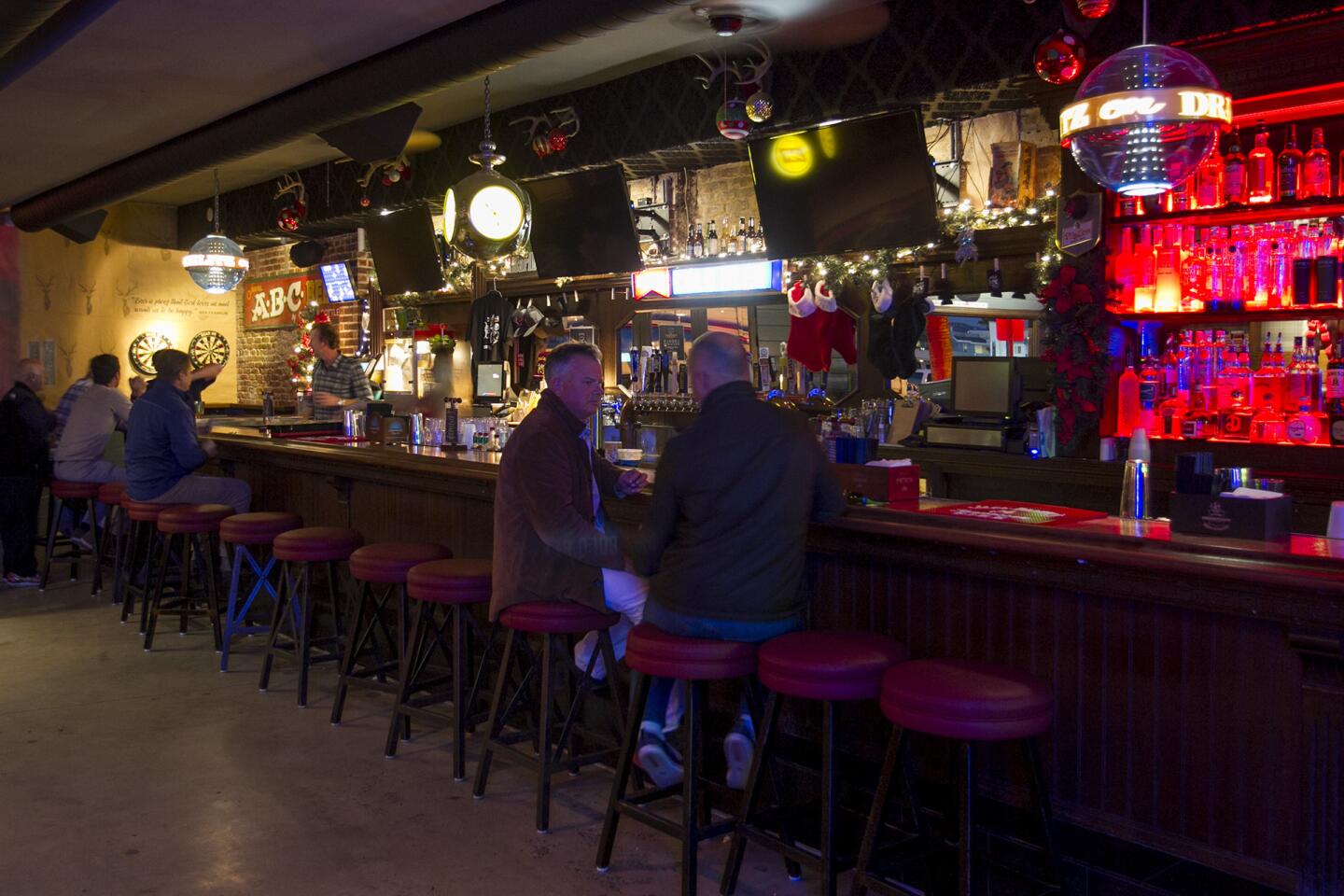Reborn Stag Bar serves history along with spirits

- Share via
If the walls at the Stag Bar could talk, owner Mario Marovic believes they’d have a fair share of stories.
From banter between pals propped on stools at the dark mahogany bar to whispered rumors of illicit interactions in the rooms above the watering hole, the building at 121 McFadden Place in Newport Beach helps tell the story of the Balboa Peninsula dating to the early 20th century.
The space initially served whiskey cocktails to guests on the first floor of the Stag Hotel, built in 1908. The Stag Bar opened with full liquor service in 1914, with a nearly 100-foot mahogany and copper bar — the longest in Newport Beach.
With the resurgence of martini bars in the early 2000s, Marovic changed the bar’s name and decor in 2006, calling it The District Lounge. It held onto that name until last month, when it reopened as the Stag Bar + Kitchen, sporting a 1940s-style look.
Locals who held fond memories of drinking at the Stag Bar often asked Marovic about bringing it back.
“People asked for it,” he said. “Much of the community remembers the bar fondly as the Stag, as it had been known for generations. It was time to bring it back and properly recognize its incredible history.”
The history of McFadden Square, the Stag Bar’s home, began with brothers James and Robert McFadden, who built the wharf in the late 1800s. At the time, the Pacific Electric Railway, which connected Newport Beach to parts of Los Angeles, was taking visitors and workers to the seaside city, transforming it into a hub of shipping and commerce. More workers flocked to the area with the creation of the Dory Fishing Fleet.
But the fishermen and other workers needed somewhere to unwind and sleep at the end of a long day.
The 11 rooms above the Stag Bar provided seasonal boarding to trade workers and fishermen. It’s been rumored that the rooms at one point served as a brothel, Marovic said.
When Prohibition ended legal liquor sales in 1920, the bar’s name was changed to the Stag Cafe, though it is believed that beer was brewed and served illegally in the apartments upstairs.
“Of course, we have no real way of knowing if that’s true,” Marovic said. “But there are stories.”
The rooms were tiny, with a small bathroom at the end of the hallway to accommodate all guests. During the remodeling this year, Marovic reduced the number of rooms from 11 to eight in an effort to increase the square footage of each. He added bathrooms to the apartments and installed an elevator in the main hallway.
“If you look at the history of Newport Beach’s population boom, they were short on housing back in the day and put in small units to accommodate as many people as possible,” Marovic said.
He now plans to rent the units weekly to people looking for a spot near the beach.
After the end of Prohibition in 1933, the Stag was remodeled as a saloon-style martini bar with stag-head taxidermy and a gun rack above the bar. Bartenders served cocktails in white tuxedos and bow ties.
When Marovic decided to change The District Lounge back into the Stag, he knew he wanted to pay homage to the location’s history.
“I wanted to bring it back to what it looked like after Prohibition in the ‘40s and ‘50s,” he said.
He found nautical light fixtures from World War II ships to pay tribute to the fishermen and sailors who visited the bar decades ago. He lined the walls with taxidermy and put a gun rack back over the bar.
He also expanded the space to include a kitchen, which beginning Dec. 30 will serve specialty pizzas, homemade meatball sliders, wings and salads.
Along the back wall, Marovic lined books, Polaroid cameras and other fixtures that he hopes will take visitors on a journey through the history of not only the Stag but of Newport Beach as well.
“I wanted it to feel like the original bar, something nostalgic and vintage,” he said. “Newport has such a rich history. I wanted to tap into that.”






